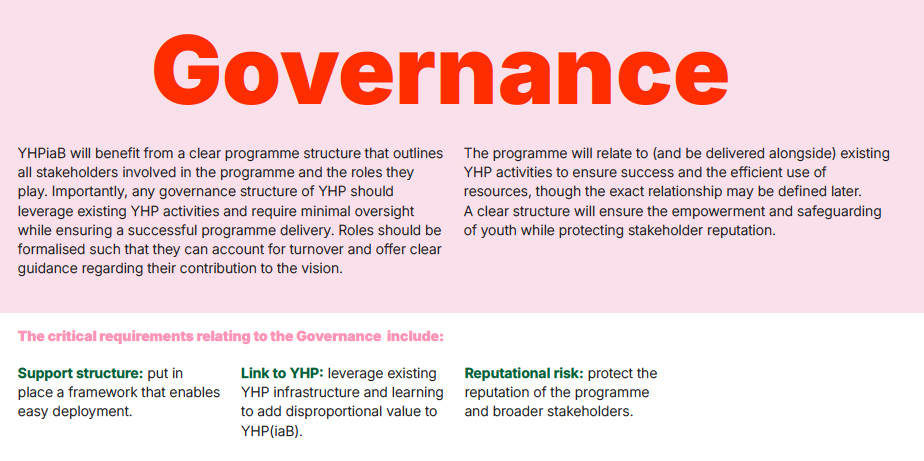︎
OVERVIEW OF CONSULTING EXPERIENCE
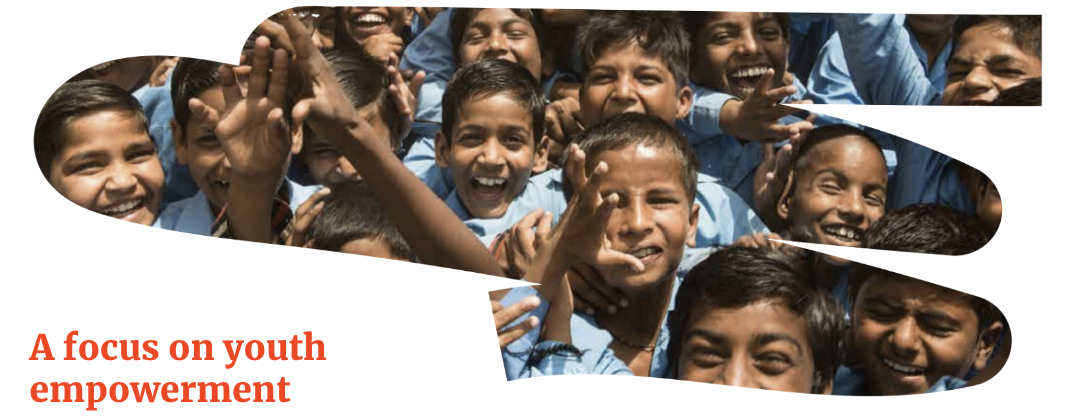
The YHPiaB programme primarily focuses on empowering youth through peer education about non-communicable disease risk behaviours in the hope/expectation that this will result in lasting behaviour change in later life. The structure of this empowerment is agile and will require fewer resources than larger programmes. Fewer resources also mean that other elements of a programme such as mobilising communities, strengthening health provision and advocating for policy will not be achievable in the same way. These may be included but are not core to YHPiaB. However, broader community engagement is still critical
THE BRIEF
To create a set of tools within a framework that can support the rapid launch, implementation, and day to day operations of a complementary YHP programme. Together, this framework and toolkit constitute YHP in a Box.

MODE OF DELIVERY
YHPiaB will consist of six core activities all supported by three programme-wide considerations as a complete - but minimum -offering that can be codesigned, tested, iterated and scaled.

How YHPiaB relates to YHP
YHPiaB builds on the strategy, content and learnings of the current YHP programme to scale thecurrent programmeʼs reach. It serves as a way to test features that could eventually be incorporated into the current YHP programme. YHPiaB will leverage existing YHP material such as:

REQUIREMENTS
The below requirements have been developed through stakeholder input and relate to both the setup and continued delivery of YHPiaB
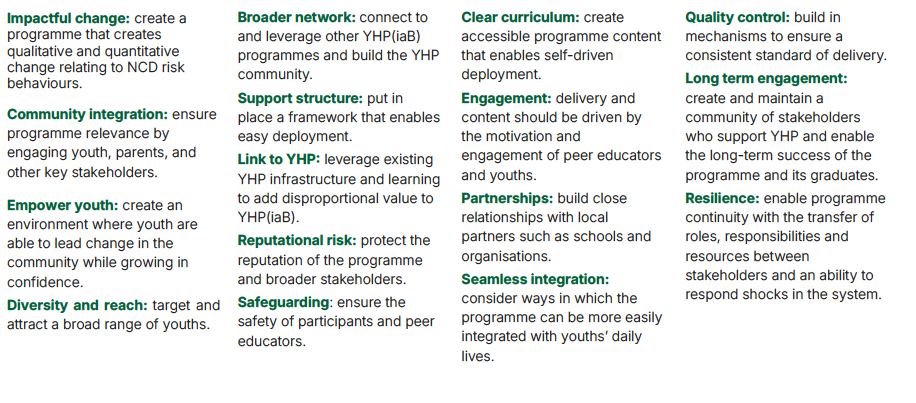
Programme Elements
There are six elements to a successful programme.The remainder of the brief discusses each of these elements in detail including a short description, how it might be achieved and what it might look like in practice.

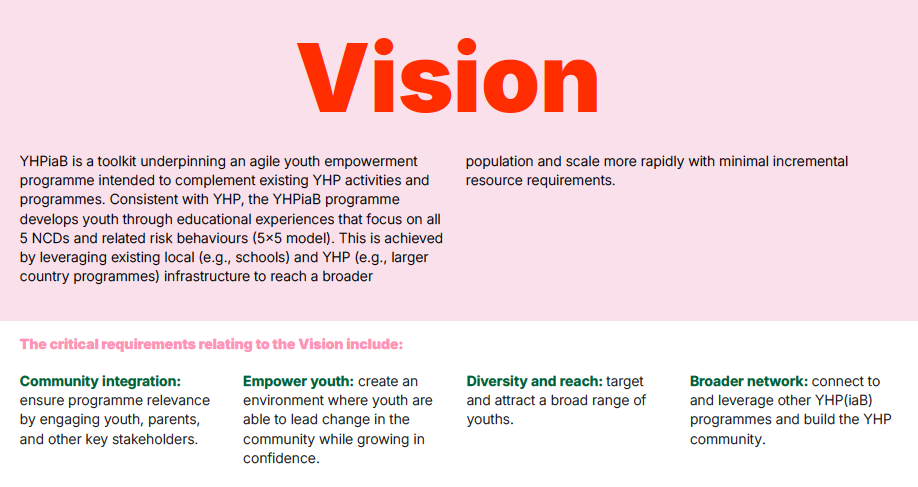
How will the vision of the programme be realised?

In order for this vision to be achieved, the programme must obtain buy-in from a variety of local stakeholders and create
partnerships to cement its standing and reputation within the
community. There must be a well-designed application process
and outreach strategy to ensure that the programme is targeting a diverse range of individuals. Once participants have beenselected, their training programme should reach beyond teaching content on the 5 NCDs to include specific personal development training such as leadership, management, public speaking, etc.
In the long term, YHPiaB programmes would be launched across many different geographic locations, all operated independently but in sync with each other. Regular communication and exchanges between programmes would be encouraged in order for the different programmes to leverage learnings, partners, and networks. Peer educators would be recruited to deliver educational content, to gain leadership skills to increase their chance at success, and eventually to be mentors and ambassadors for the YHPiaB programme.
What would the programme structure look like?
The YHPiAB governance structure may take several forms which have already been partially explored in workshops with stakeholders. There are several important considerations for anystructure. Resource requirements should decrease with
programme expansion which makes for a scalable offering.
Reputational risk must be mitigated by appropriate processes
embedded in the system. Measurement, learning and evaluation
should also be embedded within the programme structure since
many activities will occur in a decentralised way. Finally, YHPiaB should find effective ways to link to existing YHP programming while empowering youth.
Though the form of the programme structure may vary from location to location, it will share common attributes. A strong central governing body will be needed to manage programmes.Staffing and selection criteria for both programme management and local implementation will be needed. A progressive model that has a minimum offering (peer education) and more comprehensive offerings (e.g. policy engagement) may differentiate the maturity of different programmes. Finally,mentoring schemes, alumni networks and other partnerships will support programme activity

How is change thought to occur?![]()

It will be important to strike a careful balance between NCD-related educational content, personal development content, and fun activities that will help reach participants.Feedback should be collected on a regular basis in order to iterate on different methodologies and topics to understand what works.
Further reach and engagement can also be encouraged through strategic partnerships with local organizations (e.g., schools).
The Brief Vision Governance Theory of Change Implementation Evaluation Sustainability. The theory of change will be embedded in the programme structure and activities with adequate feedback mechanisms to refine as needed. The ToC will be flexible enough to be locally adapted. Successful interventions will be analysed and documented to share learning. Deeper understanding of the ToC may come from focused, periodic evaluation of particularactivities.

What are the key elements for the programme to be successfully run?
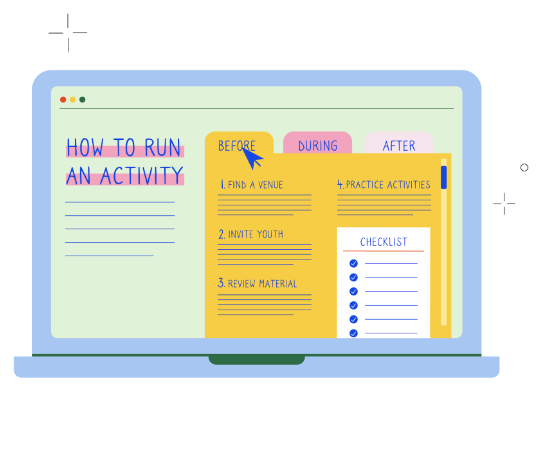
Central to achieving a scalable programme is the ease with which training (of youth and other stakeholders) can be implemented in a cost-effective manner. Standardised training for staff and peer educators together with a clear description of roles and responsibilities will help this. Recruitment strategies and required resources will be documented for different modes of engagement. Events and activities run can also be abstracted to provide training that is standardised yet adaptable for cultural contexts.
The programme will be implemented with the help of several tools that support youth and other stakeholders to fulfill their roles. The main tool will be a structured activity planning guide with a training programme, progression tracking and succession planning. These tools may be both physical and/or digital in nature and include embedded considerations of safeguarding, MEL and sustainability.
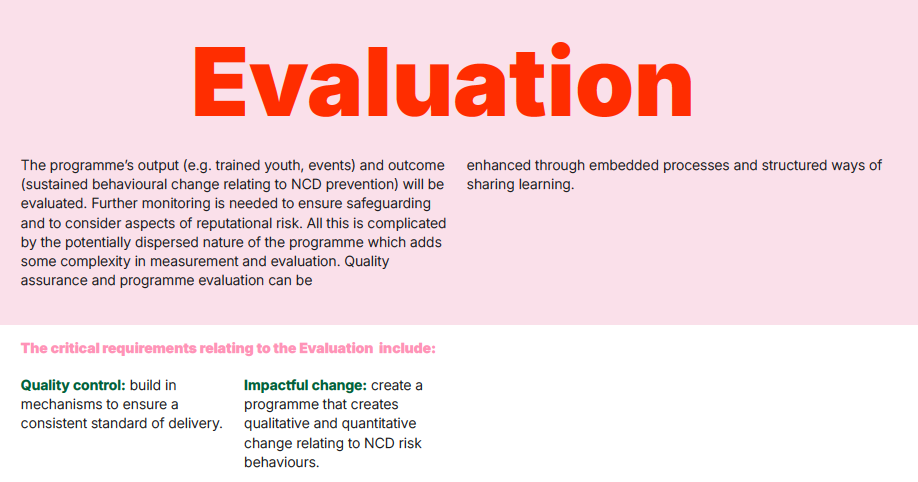
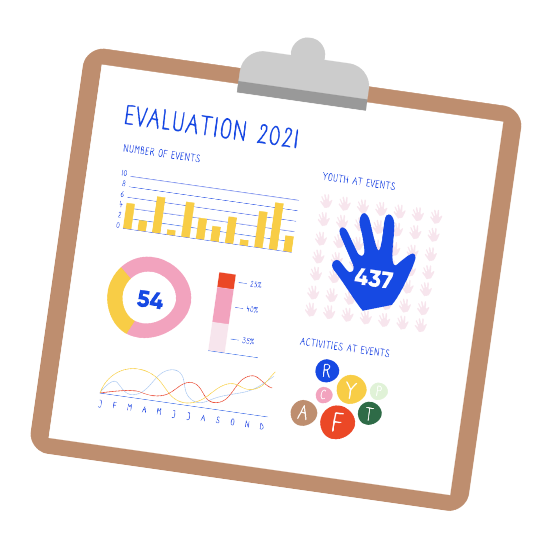
How might we measure how well the programme works?
The programme must monitor the selection and prevalence of
activities (e.g. which are run and when) and how they are
received (how successful they are). It may be useful to distinguish between constant monitoring – facilitated by simple processes filled out by the youth and embedded in programme activities – and focused evaluations that examine a particular part of the programme in detail. Metrics of interest include engagement, duration of programme with one or more stakeholders and aspects of diversity (age, gender, socioeconomic background).
The embedded evaluation may exist with forms that document activity metrics at a local level which can feed a dashboard to
check the health of the programme and any possible issues. With
a clear understanding of the programme structure and theoretical grounding, learnings can be simply collected at a local level and centrally collated for deeper insights.

How might we ensure the success and longevity of the programme?

Several factors help ensure the long-term sustainability of the programme. The programme should focus on defining and fulfilling roles rather than focusing on individuals. This ensures that any one person can be replaced because the responsibilities of that person are clear. Local support, mechanisms for local funding and structured succession planning will all also help ensure the programme is successful over time.
Wherever possible, sustainability will be built into the programme.This will be explicit in the Theory of Change and other strategic material but may not be seen by local staff. Youth and local stakeholders will be supported through handover materials, key events where handovers might occur, and structured mechanisms to give back. Tiered systems for peer educator engagement may also progress towards achieving sustainable objectives (establishing a lasting programme) and thus will be a key part of youth engagement.
